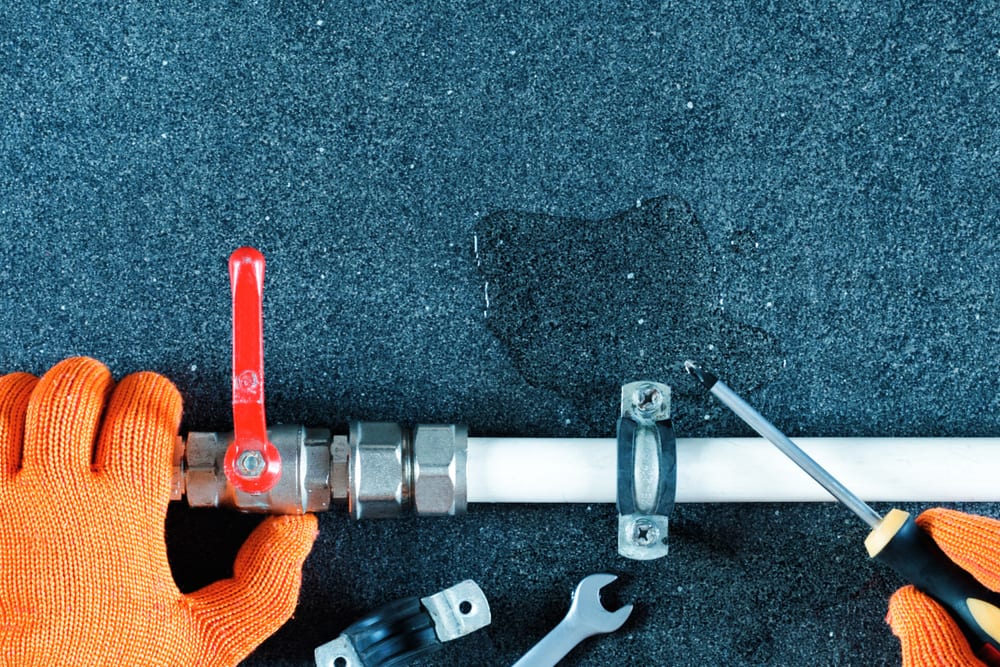Exactly how to Check If Your Home Has a Hidden Leakage
Exactly how to Check If Your Home Has a Hidden Leakage
Blog Article
Almost everyone maintains his or her own thinking with regards to Detecting hidden plumbing leaks.

Early discovery of leaking water lines can minimize a prospective disaster. Apart from conserving you money, it will certainly minimize the aggravation and also irritation. The moment you locate a leak, calling your plumber for repair work is the best option. Some tiny water leakages may not be noticeable. If you can not discover it with your naked eyes, right here are some hacks that help.
1. Take A Look At the Water Meter
Every house has a water meter. Inspecting it is a proven way that assists you uncover leaks. For beginners, turn off all the water sources. Make certain no one will purge, make use of the faucet, shower, run the cleaning maker or dish washer. From there, go to the meter as well as watch if it will certainly change. Because no person is utilizing it, there ought to be no motions. If it relocates, that indicates a fast-moving leak. Furthermore, if you spot no changes, wait an hour or 2 as well as inspect back once again. This suggests you may have a slow leak that might also be below ground.
2. Inspect Water Usage
Evaluate your water expenses as well as track your water usage. As the one paying it, you must observe if there are any inconsistencies. If you detect sudden changes, in spite of your intake coinciding, it means that you have leaks in your plumbing system. Remember, your water bill ought to fall under the same range monthly. An unexpected spike in your expense indicates a fast-moving leak.
Meanwhile, a stable increase monthly, even with the same behaviors, shows you have a slow leakage that's likewise slowly escalating. Call a plumber to thoroughly examine your residential or commercial property, specifically if you really feel a warm location on your floor with piping below.
3. Do a Food Coloring Test
When it comes to water intake, 30% comes from toilets. If the color in some way infiltrates your dish during that time without flushing, there's a leakage in between the storage tank and also bowl.
4. Asses Exterior Lines
Do not forget to inspect your exterior water lines too. Examination faucets by attaching a yard hose. Needs to water permeate out of the link, you have a loosened rubber gasket. Change this and also ensure all connections are limited. It will certainly help obtain it properly analyzed as well as kept annually if you have actually obtained a sprinkler system. One small leakage can throw away tons of water and increase your water bill.
5. Examine the circumstance and also evaluate
Homeowners should make it a habit to check under the sink counters and also also inside closets for any kind of bad odor or mold and mildew development. These 2 warnings suggest a leak so prompt attention is required. Doing regular examinations, also bi-annually, can save you from a major problem.
If you recognize your house is already old, keep a watchful eye on your heating units, tubes, pipelines and so on. Look for stainings and weakening as most appliances and pipelines have a life span. They will certainly additionally normally weaken because of wear and tear. If you think dripping water lines in your plumbing system, do not wait for it to rise. Call a specialist plumber right away so you do not end up with an awful mess in your house.
Early detection of leaking water lines can minimize a prospective calamity. Some tiny water leakages may not be visible. Examining it is a surefire method that helps you find leakages. One tiny leak can throw away heaps of water and surge your water costs.
If you think leaking water lines in your plumbing system, do not wait for it to escalate.
WARNING SIGNS OF WATER LEAKAGE BEHIND THE WALL
PERSISTENT MUSTY ODORS
As water slowly drips from a leaky pipe inside the wall, flooring and sheetrock stay damp and develop an odor similar to wet cardboard. It generates a musty smell that can help you find hidden leaks.
MOLD IN UNUSUAL AREAS
Mold usually grows in wet areas like kitchens, baths and laundry rooms. If you spot the stuff on walls or baseboards in other rooms of the house, it’s a good indicator of undetected water leaks.
STAINS THAT GROW
When mold thrives around a leaky pipe, it sometimes takes hold on the inside surface of the affected wall. A growing stain on otherwise clean sheetrock is often your sign of a hidden plumbing problem.
PEELING OR BUBBLING WALLPAPER / PAINT
This clue is easy to miss in rooms that don’t get much use. When you see wallpaper separating along seams or paint bubbling or flaking off the wall, blame sheetrock that stays wet because of an undetected leak.
BUCKLED CEILINGS AND STAINED FLOORS
If ceilings or floors in bathrooms, kitchens or laundry areas develop structural problems, don’t rule out constant damp inside the walls. Wet sheetrock can affect adjacent framing, flooring and ceilings.
https://www.servicemasterbyzaba.com/blog/how-to-detect-water-leakage-in-walls/

Do you really like reading up on Leaking water lines? Create a comment down the page. We'd be delighted to know your thoughts about this blog post. In hopes to see you back again in the near future. If you please take the opportunity to promote this content if you enjoyed reading it. I take joy in reading our article about Detecting hidden plumbing leaks.
Report this page